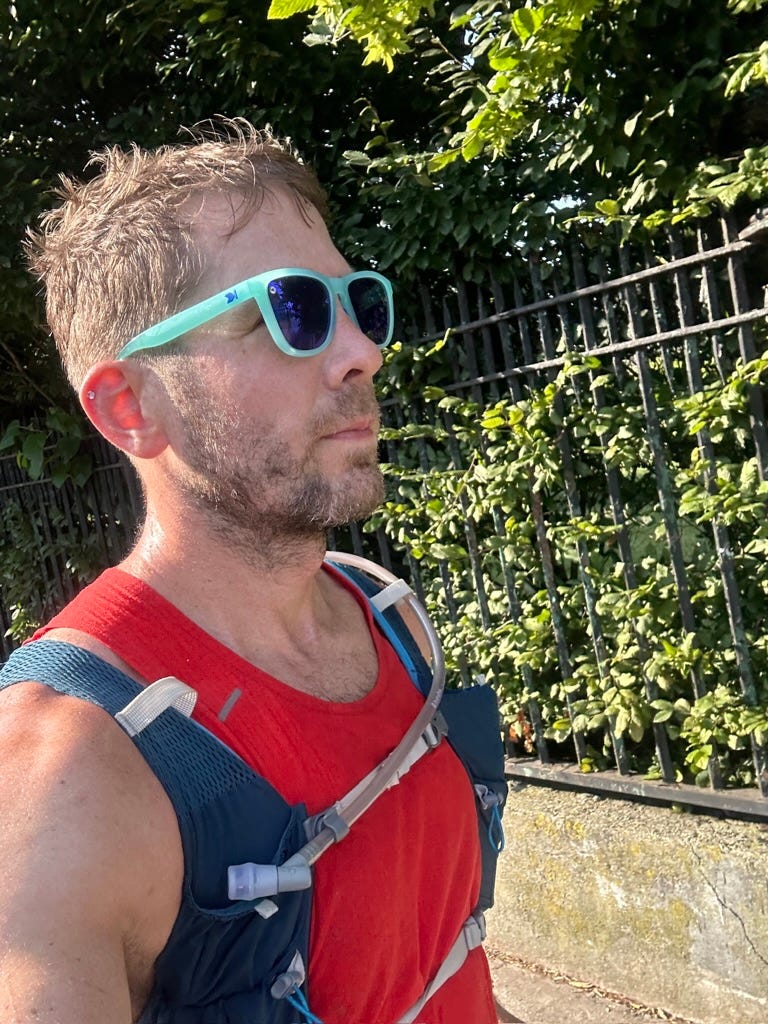Zone 2
This is Western Coffee—notes on building the creative body. Last time: Filters. The whole series is here. Please share this email; you can sign up free below.
-
The New York City Marathon is in 89 days. As I train—17 miles running yesterday, to Coney Island, where I jumped in the ocean and swam a mile—I’m still raising money for the charity Achilles International to qualify for entry. Please consider donating a few bucks if you can. Thanks.
-
One of the hardest things to do as a human, I think, is calibrate your skepticism. Everyone has woo woo beliefs; we all think something is true that we have no way of proving, at least not to wide satisfaction. Instead we encounter degrees of consensus, more of it around one belief and less around another: More adults, for example, believe the Pope speaks for God than believe that Hogwarts School of Witchcraft and Wizardry is churning out a stream of enchanted graduates. Though some surely believe both.
I’ve mentioned an effort to get better at marathon training. Last month I made one of the starkest single changes I’ve ever made as an athlete, spending a lot more time at a lower heart rate—on the theory that this would condition my body to rely on its fat stores for energy and thus prolong my stamina, that it would lower my fatigue and over time limit the strain on my body.
You can read, dozens of places, about the benefits of spending most of your training time in Zone 2. But what is my Zone 2? According to my Apple Watch, it’s 133 to 143 beats per minute. On my Peloton, the lower edge drops to 124. Using a different model based on my maximum-effort, race-day heart rate, the range is higher than either of those, with no overlap. An explainer I found on Runner’s World used my real-world maximum heart rate (which is higher than the standard 220-minus-your-age calculation) to produce a Zone 2 of 134 to 153—neither here nor there.
What’s striking to me about this metric is not just how much it varies but also how little validation there is for deriving and applying it. Pseudoscience abounds here, as does poorly designed or unattributed research. There are books for sale on so-called 80/20 training (20 percent at moderate and high intensity, the rest not), and people offering customized day-by-day training plans and coaching services, even free calculators to derive the (conflicting) zones. A whole apparatus of precision has built up around what at its core is mostly people’s opinions. An athlete or coach may swear by one approach because she has seen it succeed—but what was that success? Who was in the control group?
Running is a naked thing, a crude reduction. You can tie on your supershoes and find the right electrolyte powder and cue up the soundtrack of your dreams, but at some point—especially the more distance you go—your margins of safety will deflate and you’ll be cheek-by-cheek with your discomfort, which always, no matter how long you’ve been doing this and how strong you are, possesses the power to dissolve your will. We look for other armor, other assurances that we can finish the race and do it faster: better shoes, a better watch, a better coach, a better diet. We draw from the language and looks and kinetics of science to promise victory. In one sense all of this is working: Runners are faster than they used to be. But no one has ever managed to replace the naked athlete under the armor, who carries to every finish line the capacity for and indeed the assurance, sooner or later, of failure.
I like Zone 2 all right, just as I never minded pushing harder. As an n of one I’ll never have a clear answer about whether this approach is helping. It’s a helpful reminder that I didn’t get into any of this as a science project; I’m doing it from the inside out. I’m doing it because in doing it I experience my conscious embodiment more fully. Cross the thin shimmering membrane into the analogy for creative work—novel-writing is a Zone 2 endeavor, if ever there was one—and it’s the same thing. We’re not metrics. We’re bodies and minds, and the truth emerges from inside.
Kindly send me your thoughts, questions, and provocations: dmichaelowen@gmail.com. And say hi on Instagram or Threads, or let’s Peloton together: @leggy_blond.



